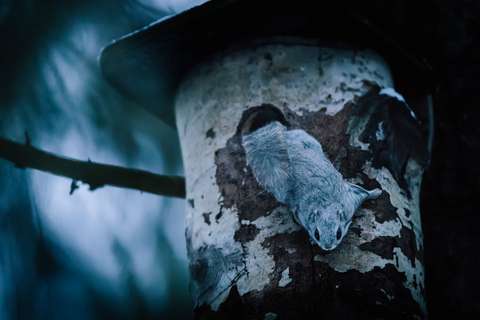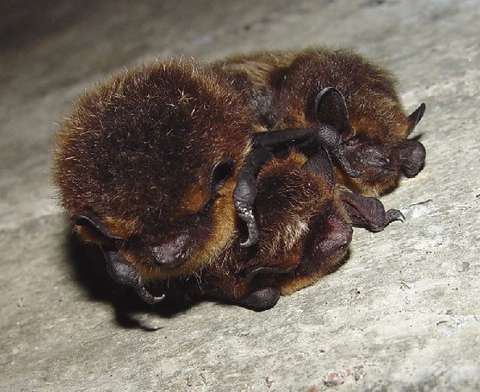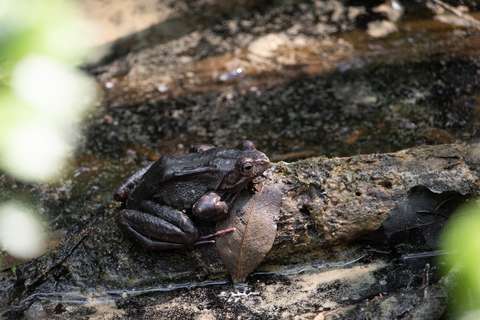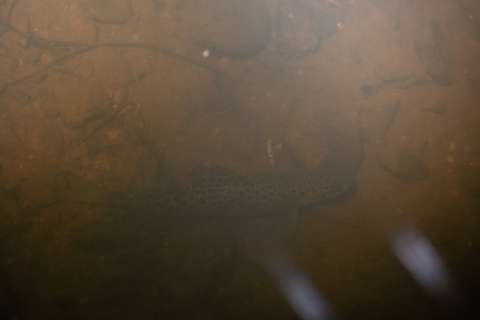Endangered and protected species in Espoo
Rich fauna and flora reflect Espoo's biodiversity. There are 70 known endangered and over 100 near threatened species living in Espoo.
The habitats of endangered species are surveyed in Espoo when change in the land use is being prepared to the area. These habitats are, then, protected with plan symbols and regulations, if needed. Observational data about endangered, near threatened and insufficiently known species found in Espoo was last collected in 2011.
Examples of endangered and protected species living in Espoo and their conservation
There are about 1,000–2,000 flying squirrels living in Espoo, and their habitats reach from the old forests in northern Espoo to the small forest areas located in the dense urban environment in southern Espoo.
The flying squirrel is a species protected under the EU Habitats Directive, which means that destroying and diminishing its breeding and resting sites is prohibited. In Espoo, the habitats and passage routes of flying squirrels are surveyed in connection with projects that change land use and these are often protected with plan symbols and regulations. Nature management measures are also adjusted to meet the needs of the species.
There is also national and international cooperation to protect the flying squirrel. In 2018–2025, Espoo will participate in the Flying squirrel LIFE project that aims to strengthen the flying squirrel population and improve the protection of the flying squirrel in Finland and Estonia. Espoo acts in the project as an expert in reconciling flying squirrel conservation with land use and will strengthen and create flying squirrel passage routes and accumulate information on flying squirrel behaviour in the urban environment.
Here you can read more about flying squirrel protection and answers to frequently asked questions.

Bat species found in Espoo include the northern bat, the Daubenton’s bat, the whiskered bat, the Brandt’s bat and the brown long-eared bat. Bats are nocturnal flying mammals that look for daytime hiding places in structures such as buildings, tree holes and bat boxes. Bat breeding and resting places are protected under the EU Habitats Directive, which means that destroying or diminishing these places is prohibited.
The population of bats living in Europe is limited by factors such as the declining volume of suitable agriculture and forestry areas and the lack of suitable daytime hiding spots and wintering grounds. Due to the use of pesticides and herbicides, the number of insects has also decreased, which also limits the bat populations. The occurrence of bats is also negatively affected by wind plants, nighttime lighting and intensive forestry.
In Espoo, suitable resting places and places for wintertime hibernation for bats are surveyed and secured, if necessary, with plan symbols and regulations. You can also build a nesting box for bats. Before you can hang a bat box, you need to have permission from the landowner.

The moor frog is a species protected under the EU Habitats Directive, which means that destroying and diminishing its breeding and resting sites is prohibited. Moor frogs live in humid habitats, especially on lush beaches and in swamps; their spawning grounds are usually the beaches of ponds, lake or sea bays, floodplains and swamps along the shores of various waters. Some moor frog populations have separate wintering and spawning areas between which the frogs roam.
Moor frogs have become endangered due to the decline in suitable habitats, both on land and in water. This, in turn, is due to the drainage of water bodies, forestry and peat production, among other things. The most significant factor reducing the number of moor frogs is environmental pollution.
The species is part of the fauna of most waterfowl habitats. Therefore, in Espoo the habitats of moor frogs are surveyed in connection with the monitoring of nesting birds in waterfowl habitats. If necessary, additional surveys are also carried out in potential areas of occurrence when, for example, a city plan project is underway in a potential area of occurrence. The moor fog population was last surveyed in 2022 in the survey of nesting birds and moor frogs.

The green-shield moss grows in coniferous forests and groves on large snags and stumps that have decayed so much they have become soft. The oak zone of the southern part of the country is at the extreme end of its range. The moss species is endangered because the decaying wood required by it has started to disappear from our forests and there are only few habitats that are suitable for it.
The species is protected under the EU Habitats Directive, but it is no longer a strictly protected species. The habitats suitable for the species that are located in Espoo are mainly known, and effort is being made to secure the larger habitats through city planning. Disposal of small habitats does not affect the species’ favourable level of conservation in Espoo.
The lichen species Cladonia incrassata is an extremely endangered species in Finland and it has been placed under strict protection. So far, the only known location for the Cladonia incrassata in Finland is located north of the Tapiola golf course. The site is protected as a natural monument.
The wild trout is very endangered in Finland, with the exception of the northernmost Finland. Trout populations have been reduced by, among other things, the deterioration in the quality of waterways, hydraulic engineering and overfishing. The wild sea trout is protected from fishing throughout our sea area, but they still end up becoming bycatch in the net-fishing for the common whitefish.
In Espoo, the trout spawns in Espoonjoki, Lukupuro and Monikonpuro. The trout spawning in a river indicates that the river is in good condition. Espoo also implements water restoration projects aimed at improving the state of running waters and, among other things, increasing the number of redds suitable for the trout. The most recently restored sites include the Gumböle fishway and the river Espoonjoki.
More information about water conservation and restoration of running waters is available on the Water conservation page.

The beetle species Bembidion monticola is a specialty of Espoo, as its only known locality in Finland is located in the shady grove of the river Glomsinjoki. The Bembidion monticola, which belongs to the ground beetles, lives on the water’s edge where it preys on small soil animals and hides under rocks. The Bembidion monticola winters as an adult above the flooding line in the forest, under the bark of rotting deciduous tree branches lying on the ground and in leaf litter.
In Espoo, the conservation of the beetle is ensured by taking the species’ needs into account in the projects and plans implemented near where the beetle is known to live.
The leaf beetle species Macroplea pubipennis lives in the shallow brackish waters of the Baltic Sea coast, usually in sheltered bays. It is found along the Finnish coast from Hamina to Oulu and Åland. One of the species’ strongest populations is at the end of Espoonlahti, but in Espoo it has also been found in Kallvik, Saunalahti, Marinsatama and Soukanlahti.
The habitats suitable for Macroplea pubipennis have decreased and diminished due to things such as deteriorating water quality, intergrown shallow coastal waters and hydraulic engineering. The species is classified as near threatened. In Espoo, the potential habitats of the species are surveyed in connection with projects that change land use and they are protected with plan symbols and regulations, if needed.
Biodiversity is not safeguarded merely by preserving the habitats of endangered species. Therefore, it is important that nature conservation is examined more broadly than just through the protection of individual species. For example, the ecological connectivity must be ensured. More information about Espoo’s actions to promote biodiversity is available on the Nature conservation in Espoo page.